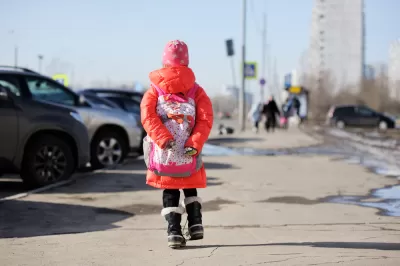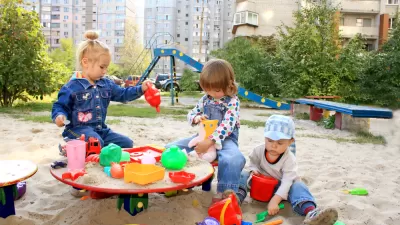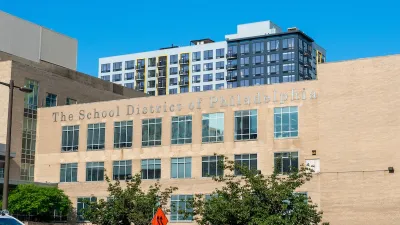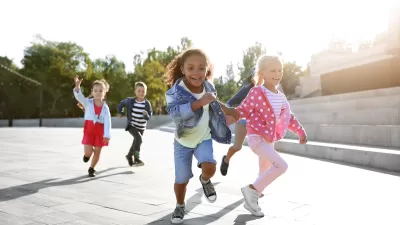A city that fosters the mental and physical health of children is safer for everyone. Six key planning and design considerations promote the well-being of the city's youngest residents.

We can use urban planning and design to better protect children. "It’s estimated that up to 500 children die daily in road crashes around the world; thousands more incur injuries and psychological trauma from collisions with vehicles that can affect them for years," write Nikita Luke, Rohit Tak, Ariadne Samios, and Claudia Adriazola-Steil.
Their article offers six ways cities can change the lives of kids for the better—ideas that go beyond adding playgrounds and aims to consider children's needs in decisionmaking processes regarding public policy.
The six improvements identified by the authors promote enhanced mental and physical health in young people: increase accessible green space, ensure safe pedestrian infrastructure, implement low-speed zones, include car-free streets, consider size, and create clean air zones.
But the benefits experienced by children would also be felt by adults. The article quotes Mayor Enrique Peñalosa of Bogotá in describing children as "a kind of indicator species." If urban planners and designers are able to build a city that promotes success for kids, everyone will experience success in cities.
"As cities and national governments reset after the coronavirus and ponder investments that will hasten a return to economic and social vibrance, incorporating the unique perspectives of children can help create more inclusive, healthier, livable cities. It’s time for cities to start thinking proactively and long-term about how best to serve all residents, including their youngest" write the authors.
FULL STORY: What Makes a Child-Friendly City? Redesigning Safer and Healthier Urban Spaces for Young People

Alabama: Trump Terminates Settlements for Black Communities Harmed By Raw Sewage
Trump deemed the landmark civil rights agreement “illegal DEI and environmental justice policy.”

Planetizen Federal Action Tracker
A weekly monitor of how Trump’s orders and actions are impacting planners and planning in America.

The 120 Year Old Tiny Home Villages That Sheltered San Francisco’s Earthquake Refugees
More than a century ago, San Francisco mobilized to house thousands of residents displaced by the 1906 earthquake. Could their strategy offer a model for the present?

In Both Crashes and Crime, Public Transportation is Far Safer than Driving
Contrary to popular assumptions, public transportation has far lower crash and crime rates than automobile travel. For safer communities, improve and encourage transit travel.

Report: Zoning Reforms Should Complement Nashville’s Ambitious Transit Plan
Without reform, restrictive zoning codes will limit the impact of the city’s planned transit expansion and could exclude some of the residents who depend on transit the most.

Judge Orders Release of Frozen IRA, IIJA Funding
The decision is a victory for environmental groups who charged that freezing funds for critical infrastructure and disaster response programs caused “real and irreparable harm” to communities.
Urban Design for Planners 1: Software Tools
This six-course series explores essential urban design concepts using open source software and equips planners with the tools they need to participate fully in the urban design process.
Planning for Universal Design
Learn the tools for implementing Universal Design in planning regulations.
Clanton & Associates, Inc.
Jessamine County Fiscal Court
Institute for Housing and Urban Development Studies (IHS)
City of Grandview
Harvard GSD Executive Education
Toledo-Lucas County Plan Commissions
Salt Lake City
NYU Wagner Graduate School of Public Service





























